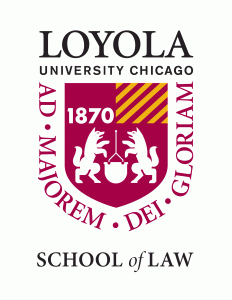With the uptick of furloughs and layoffs over the last six months of the COVID-19 pandemic, more and more students face the possibility of insatiable housing situations and possible homelessness. Even prior to the pandemic, Chicago Public Schools (CPS) reported serving a total of 16,451 homeless students during the 2018-2019 school year. Although CPS has not released data for the COVID-era, many national organizations expect homelessness to spike through the pandemic, leaving children in fluctuating circumstances, wrought with stress and housing instability.
Because of these changes, a question many are asking is how to appropriately serve children who are experiencing homelessness; in a wider sense the question is: what, exactly, constitutes homelessness? The answer lies in the McKinney-Vento Act. The McKinney-Vento Act (“MVA”) was most recently reauthorized in December of 2015 under Title IX, Part A of the Every Student Succeeds Act (ESSA) as a means of addressing child and youth homelessness in schools. MVA requires that schools identify, reach out, and support students experiencing homelessness. However, there may be more children experiencing homelessness that are covered by this act than one may think, including students displaced due to domestic violence, substandard living conditions, and students with hospitalized parents. (A full list of situations which constitute homelessness under MVA can be found here.)
Data from CPS indicates that 88.5% of its homeless students live in “doubled-up” environments with other families, which usually results in over-crowded and/or dangerous living conditions. Around 11% of these families live in shelters, 1% lived in motels, and the remaining 0.3% reported living in a car or other public space.
What Benefits are Provided Under MVA?
Should a child you work with qualify for MVA supports under one of the above categories, they are entitled to immediate assistance from their school of origin. The school of origin is the school where the child started the school year. In the COVID-era, this includes distance learning programs, meaning that the school of origin for children experiencing homelessness during COVID-19 will be the distance learning program the child was enrolled in at the start of the year. Under MVA, schools must continue enrollment for a child protected by the Act even if the child moves out of the district due to housing instability. The MVA also requires that students be enrolled immediately, regardless of whether they have all the required verification documentation. This is important as it keeps children in a stable school environment and allows for continuous education in spite of outside stressors.
MVA qualified students also have unique protections relevant to the troubles faced by many students in the current COVID-19 crisis. Students who qualify are ensured assistance with WiFi access for educational purposes, delivery of educational materials resources such as pens, paper, pencils, etc., access to nutritional services, access to the school district’s homeless education liaison for continued assistance and support, and equitable access to a free and appropriate public education (FAPE) at their school of origin until the end of the year. The access to a free and appropriate public education is of particular importance, as this is a protected right generally only reserved for students receiving special education services. FAPE guarantees the child a measure of appropriate education, with legal resources available in situations where an appropriate public education is not delivered.
Does MVA Provide Funding Assistance for Schools?
In addition to the protections listed above, MVA-qualified students receive entitlements under Title I funding, granting financial assistance for the following: student fees, extended learning time for children in non-traditional housing situations such as shelters and over-crowded living quarters, tutoring services, and access to adequate technology for distance learning purposes. This is especially important for children experiencing homelessness as a result of COVID-19 because it ensures equitable access to learning supports, including the possibility of obtaining additional tutoring hours, specific instruction to overcome the difficulties of living in a shelter or overcrowded housing, and access to appropriate technology for remote classes.
The great question in all of this is how schools already struggling with funding from thinly stretched budgets can provide even more assistance to children. On April 6, 2020, the US Department of Education announced a number of funding initiatives and relief plans for schools. Two of these waivers are of particular importance for children covered under MVA:
- First, states may now request to carry over funding from their 2019 Title I, Part A funds into 2020, which can be used after September 30, 2020 for additional supports.
- Additionally, the Department of Education allowed an extension of 2018 Title I, Part A and MVA funds until September 30, 2021.
These waiver requests promise an answer within one business day, allowing for quick access to extremely necessary funds. Further, the CARES Act distributed $13 billion to schools via the Elementary and Secondary School Emergency Relief Fund, which provides flexibility for funding all students, including those covered by the MVA. Finally, it is important to remember that MVA funding is meant for supplementing Title I and additional federal funding. Schools can dip into the MVA funding, but should look to federal waivers, Title I, and CARES Act funding to provide equitable opportunities to homeless students first.
How Can Schools Help MVA-Qualified Students?
Finally, the question comes: “but what more can we do?” Schools need to work even more closely with their community homeless liaisons to be aware of and up to date on the changing situations of their students. School administrators should be more fully aware of MVA funding and implementation methods and be willing to disseminate extremely important changes, updates, and training on MVA to their teachers and staff. In COVID, administrators should also be looking towards how to cover students with changing housing situations under MVA as quickly as possible and working with community and legislative resources to provide a safe space daily to students in difficult homing situations. Raising awareness of and training on MVA are key components of ensuring that the students in the direst of housing situations are allowed back into the safety and stability of a school building as quickly as possible.
Hannah Cholewinski is a law student at Loyola University Chicago School of Law and wrote this blog post as part of the Education Law Practicum.


